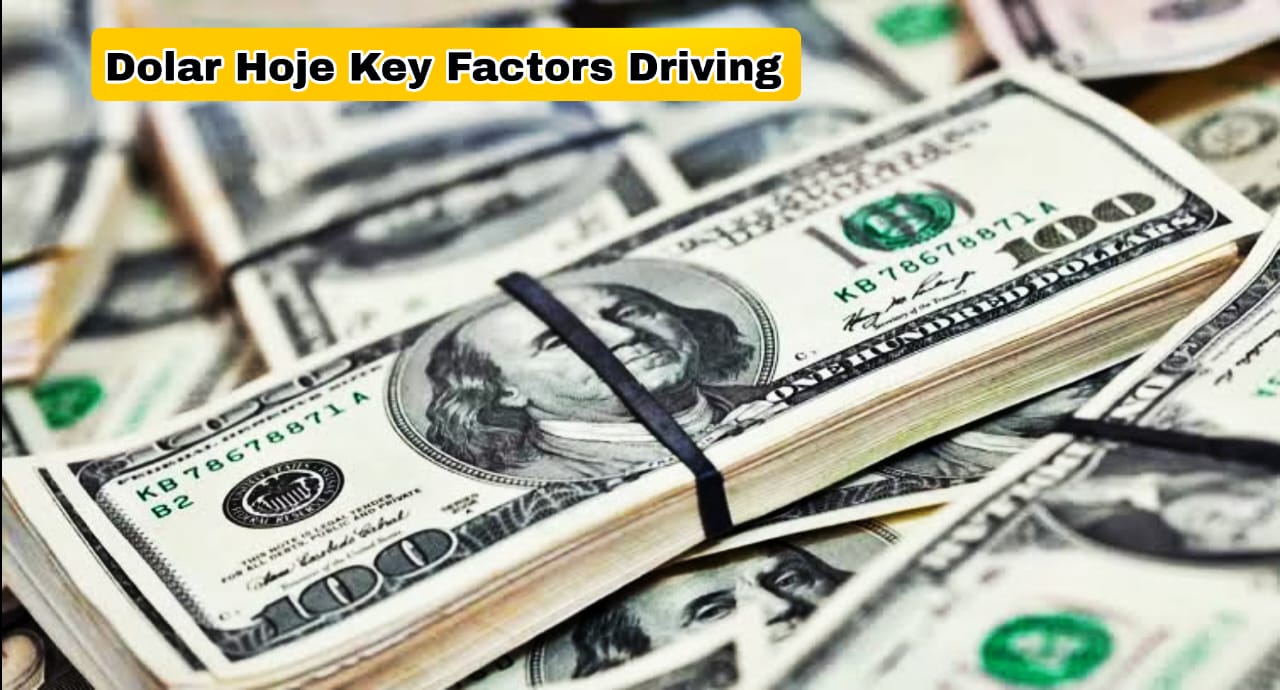
Dólar Hoje: Understanding the Dollar Exchange Rate and Its Impact on the Brazilian Economy
The global currency market is one of the most dynamic and influential in the financial world, with the U.S. dollar (USD) being a key indicator of economic trends. For residents in Brazil, knowing the dólar hoje (today’s dollar rate) is essential for various reasons, whether it’s for planning international travel, shopping from foreign websites, or simply understanding broader economic fluctuations. This article explores the factors that determine the dollar exchange rate, its impact on the Brazilian economy, and how consumers and businesses can prepare for currency fluctuations.
What is the Dollar and Why is it Important?
The U.S. dollar is the official currency of the United States and is one of the most widely traded currencies worldwide. Its importance extends beyond U.S. borders, as it is used in international trade and serves as a reserve currency for many countries. The U.S. dollar is often seen as a “safe-haven” currency during times of economic crisis or geopolitical instability, which can cause its value to rise depending on global demand.
In Brazil, the dólar hoje plays a significant role in determining the cost of imported goods, such as electronics, fuel, and food products. The dollar exchange rate is also a key indicator for investors and analysts who seek to gauge the health of the Brazilian economy. As a result, checking the dollar rate is vital for anyone involved in international transactions or interested in understanding the country’s economic conditions.
How is the Dollar Exchange Rate Determined?
The exchange rate of the dollar is influenced by various economic factors, both domestic (in Brazil) and international (global). The primary mechanism that determines the value of the dollar is the foreign exchange (forex) market, where currencies are bought and sold. The dollar’s price fluctuates based on supply and demand, which is affected by several key factors:
1. Interest Rates in the U.S. and Brazil
Interest rates are one of the most important drivers of currency values. When the U.S. Federal Reserve raises interest rates, investments in U.S. dollars become more attractive, which tends to strengthen the dollar. Similarly, the Brazilian Central Bank (Banco Central) can adjust interest rates to control inflation or attract foreign investment, which can also affect the value of the real in relation to the dollar.
2. Inflation Rates
Inflation plays a critical role in determining the strength of a currency. When a country experiences high inflation, its currency loses purchasing power, leading to increased demand for dollars. In Brazil, for instance, high inflation often results in a weaker real (BRL) and a higher dólar hoje. This is because consumers and businesses seek more stable currencies, such as the U.S. dollar, to protect their purchasing power.
3. Political and Economic Crises
Political instability and economic crises have a major impact on the dollar exchange rate. When Brazil faces political uncertainty or economic turmoil, investors tend to move their assets into the U.S. dollar as a safe-haven currency. This increased demand for the dollar drives up its value against the real. Similarly, in times of global financial crises, the dollar often strengthens due to its role as a reserve currency.
4. Commodity Prices
Brazil is a major exporter of commodities such as soybeans, iron ore, and oil. The prices of these commodities are often denominated in dollars, so fluctuations in commodity prices can influence the dollar exchange rate in Brazil. When commodity prices rise, Brazil’s exports generate more revenue in U.S. dollars, potentially strengthening the real. On the other hand, a decline in commodity prices can weaken the real, pushing the dólar hoje higher.
5. Market Expectations
Investor sentiment and market expectations also play a crucial role in determining the dollar exchange rate. If investors believe the U.S. economy will perform better than Brazil’s economy, they may buy dollars, which increases the demand for the currency and drives up its value. Similarly, political or economic uncertainty in Brazil can lead to expectations of a weaker real, further pushing the dollar exchange rate higher.
How to Track the Dólar Hoje?
Staying updated on the dólar hoje is essential for anyone dealing with international transactions. Fortunately, there are several ways to track the dollar exchange rate in real time. Some of the most reliable sources include:
- Financial Websites: Websites like Bloomberg, Reuters, and specialized currency exchange sites offer real-time dollar exchange rates, along with detailed market analysis.
- Currency Exchange Apps: Mobile apps such as XE and Moeda Converter allow users to track currency fluctuations and view live exchange rates for the dollar and other currencies.
- Financial Institutions: Banks and exchange houses also publish their own exchange rates, though the rates may vary slightly depending on the institution’s margins.
How Does the Dollar Impact the Brazilian Economy?
The dólar hoje has a direct impact on various sectors of the Brazilian economy. Below are some of the most significant effects:
1. Prices of Imported Goods
Many consumer goods in Brazil are imported, and their prices are closely tied to the value of the dollar. Electronics, clothing, and cars, for example, are often priced based on the dollar exchange rate. When the dollar rises, the cost of these goods increases, which can lead to higher prices for Brazilian consumers. This has a direct impact on household budgets and consumer purchasing behavior.
2. Fuel Prices
Brazil imports a portion of the oil it consumes, and the price of fuel is directly affected by the dollar exchange rate. A stronger dollar leads to higher oil prices, which in turn causes an increase in gasoline and diesel prices in Brazil. This has a ripple effect on transportation costs, food prices, and overall inflation.
3. Foreign Investment
The dollar exchange rate can also influence foreign investment in Brazil. When the real is weak, foreign investors may see Brazilian assets as cheaper, potentially increasing investment inflows. However, a sharp rise in the dollar can also make it more expensive for Brazilian companies to borrow money in foreign currencies, which can hurt the business climate and limit economic growth.
4. Tourism
The value of the dollar also impacts tourism. When the dollar strengthens against the real, it becomes more expensive for Brazilians to travel abroad. On the other hand, foreign tourists, particularly Americans, may find it cheaper to visit Brazil, as their dollars will have more purchasing power in the country.
Preparing for Dollar Fluctuations
Currency fluctuations are a natural part of the financial market, but understanding the factors that influence the dólar hoje can help you prepare for potential changes. Here are some strategies to consider:
- Monitor the Market Regularly: Stay informed about global economic trends, interest rate decisions, and local political developments that could affect the dollar exchange rate.
- Plan International Purchases: If you know you will need dollars for travel or purchases, try to monitor the exchange rate and buy when the rate is more favorable.
- Diversify Investments: For investors, diversifying your portfolio across different asset classes can help protect against risks posed by currency fluctuations. Consider investing in both domestic and international assets to reduce exposure to a weakening real.
Conclusion
The dólar hoje is a critical factor in both the Brazilian and global economy. Whether you’re a consumer buying imported goods, a business dealing with international trade, or an investor monitoring the markets, understanding the dynamics that drive the value of the U.S. dollar is essential. By staying informed about exchange rate trends and the economic factors at play, you can make better financial decisions and prepare for changes in the market. The dollar’s impact on Brazil is profound, affecting everything from prices to investment decisions, so being proactive in understanding its fluctuations can help you navigate the complexities of the global economy.
